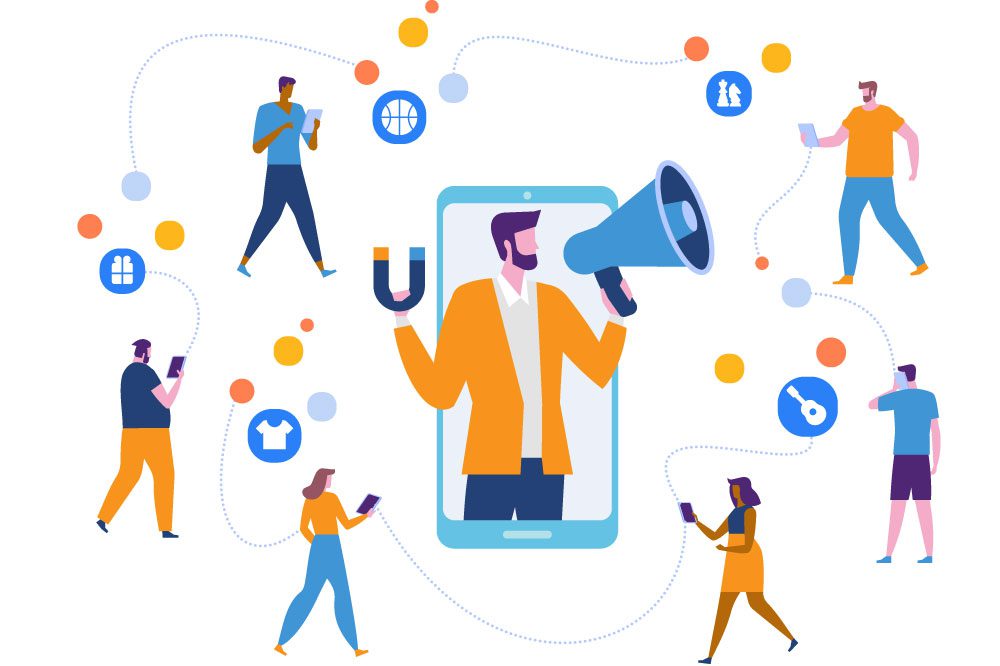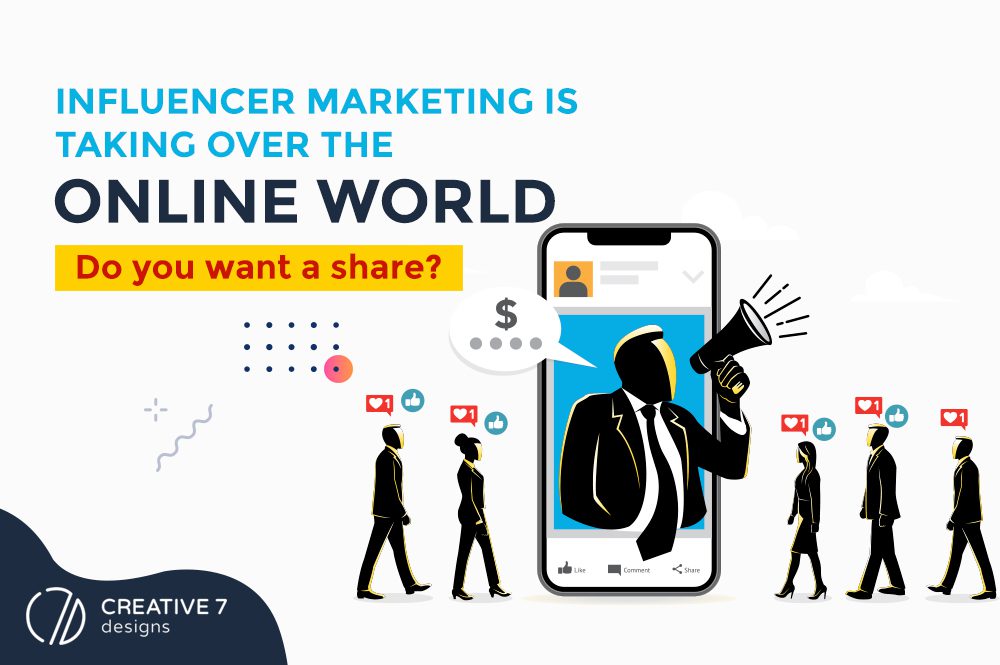Complete with curated audiences and highly “relatable” micro-celebrities, influencer marketing is changing the online world for better (and worse)
There is an undeniable  impact of influencer marketing to the online world. Every industry — from fashion to food — is getting a piece of the “influential” profit. And your business can, too. The question is: Do you want to be involved?
impact of influencer marketing to the online world. Every industry — from fashion to food — is getting a piece of the “influential” profit. And your business can, too. The question is: Do you want to be involved?
We’re not strangers to the influencer trend. Not too long ago, we linked microinfluencer Joel Greene (ieexplorer) with our client Redlands Ranch Market to showcase the market’s new meat department. And to say it was a success would be an understatement.
We’ve aware of the positive affects of influencer marketing for both parties involved.
Influencer marketing gives companies the ability to sell more of their products/services without having to spend as much as they did with traditional marketing techniques.
Statistics show that:
– 80% of marketers say influencer marketing is effective
– 89% say it works just as well (if not better) than other marketing channels
– 71% of marketers say the quality of customers and traffic from influencer marketing is better than other sources
But everything has a not-so-bright side. That’s why we’re interested in addressing the basics of influencer marketing in addition to aspects of the marketing strategy that people don’t really talk about (or are aware of) these days:
What is influencer marketing
Benefits vs. challenges of influencer marketing
The dark side of influencer marketing
WHAT IS INFLUENCER MARKETING
Influencer marketing is the latest marketing approach businesses use to endorse their products or services. Acting as a sort of third-party salesperson, influencers who have built an online following/community are 1,000 followers (microinfluencers) to 100,000 followers (professional influencers) are scouted, so to speak, by various companies.
These companies rely on the influencer’s consistent and reliable relationship with their supporters (mostly common folk looking for someone to “relate” to).
Through the influencer platform, companies get their products in front of their target audience without having to put in the work to target their audience — the influencer has already curated the ideal audience based on their content; all the company (also known as sponsor) needs to do is find the influencer and reach out to them. The rest is history.
Why and how businesses use influencers
For anyone who ever had any doubts, influencer marketing is here to stay. Businesses recognize that influencers do just that — influence. So they take advantage of this ability to influence.
That explains why 71% of companies currently use influencer marketing, or have used it in the past. And, this number is only going to get bigger.
The pandemic highlighted just how effective influencers can be at creating authentic content in challenging, often prohibitive, circumstances. It is this ability to build trust with their audiences that makes influencers so valuable to brands.
Finding an influencer who will suit a specific industry isn’t that hard. Hashtags allow social media users to find and engage with content related to common themes or interests. And social media users don’t exclude successful companies such as McDonalds and Sprint.
In fact, as an example, Sprint jumped on the influencer bandwagon with ad videos jam-packed with popular influencers. Why? Because influencers influence. And they knew that one of the easiest ways to attract the younger generations is by creating an influencer salad to watch on-screen — all their favs tossed into one commercial. (Yes, Gen Z’s will purchase a Sprint phone just because their fav endorsed it.)
And just how do businesses find the “ideal” influencer? That’s an easy one: Hashtags. And a social media marketing specialist (or something similar).
Using hashtags to make influencer marketing easier
Though hashtags were first widely used on Twitter, they’ve become common on other social media platforms as well including Facebook, Instagram, LinkedIn, Google+ and Pinterest.
Hashtags are designed to:
Make content discoverable
Find information with a theme or specific content
Encourage social media users to explore content that catches their attention
Reach their target audience
Help members filter information
Essentially, the aforementioned points are all saying the same thing: Use hashtags to find something specific on a platform.
If you’re ASOS, you might seek influencers who are interested in fashion through the hashtag #outfitoftheday. Makeup brands would rightfully search for people focused on health and beauty through the hashtag #mua or #beautyblogger. Tech companies could seek out tech heads by searching just that… #techhead.
The endless possibilities become more manageable when hashtags are involved.
BENEFITS VS. CHALLENGES OF INFLUENCER MARKETING (COSTS, ROI, LONGEVITY)
As “affordable” as influencer marketing began, where there’s a trend, there’s a demand. And where there’s a demand, there’s bound to be some sort of change in price.
We’ve talked a bit about the convenience influencer marketing creates for both businesses and influences alike. You can do a lot with one Influencer and a smaller budget. But challenges with money still exist.
Businesses relying on influencer marketing are seeing the affects of the popularity now. The cost of acquiring new customers on Instagram, Facebook, and other social media platforms costs continue to increase.
Customer acquisition costs and consumer privacy
Apple’s launch of a new mobile operating system, iOS 14.5, back in April has clearly had an impact on the cost of acquiring new customers. Many brands saw the costs of acquiring new customers on Facebook leap by double digits.
Some direct-to-consumer brands saw the cost of market impressions, known as CPMs, on Facebook rise 42 per cent in May over a year earlier.
With digital targeting being the next money target, marketers have already started to think more broadly about where to spend their marketing budgets, and many must rely less on digital targeting of consumers.
Say goodbye to only needing a $20K budget to spend. Paying one popular influencer to post one picture with your product on IG might not be a viable option in the future.
Yet, as both Google and Apple put much greater emphasis on consumer privacy, influencer marketing and customer acquisition will only become more difficult.
THE DARK SIDE OF INFLUENCER MARKETING: DON'T BELIEVE EVERYTHING YOU HEAR, SEE, OR READ
Ironically, one of the core benefits of influencer marketing is also something for which to look out: Credibility.
Earlier, we stated that it’s their ability to build trust with their audiences that makes influencers so valuable to brands. Yet, the thing about influencers is that their supporters respect their content and recommendations so much, that they’ll take their word for just about anything. Seriously.
For instance, what happens when the White House teams up with TikTok stars and local micro influencers for pro-vaccine campaigns? I mean… just picture this:
A high school senior usually posts short fashion and lifestyle videos. They’re asked by a third-party to join a White House-backed campaign alongside an eclectic army of other influencers across various platforms such as Twitch, YouTubers, and TikTok. The campaign: Youths getting vaccinated.
What’s wrong with this? Not much… on surface level. But the actual issue with influencer marketing has a lot to do with the verisimilitude of the influencers.
With this scenario, you can’t help but wonder if these youths actually care about the campaign and its effects, or simply want some money and the chance to say, “I’ve done work with the White House.”
Let’s face it: That’s a pretty gnarly addition to one’s CV. But what does say about the future of influencer marketing?
To trust or not to trust your online “fav”
As influencers continue to use their trust and loyalty to put any and all types of messages in front of an actively engaged audience for money, some begin to wonder just what their fav would promote for some money.
Using the above White House example, the youthful masses have the lowest inoculation rates of any eligible age group in the United States. And The White House’s campaign has one goal: To encourage influencers with youthful audiences to get vaccinated against the coronavirus.
What will people do for money? Who can you trust? Has your fav influencer lied to you?
One trend that made its way around YouTube influencers of all industries was “The Truthful Youtuber Tag” where Youtubers discuss dishonest moments in their career.
This includes discussing other influencers they don’t trust, products they’ve reviewed because they were paid (not because they actually liked it), and more.
Needless to say, a lot of YouTubers were transparent about lying at least once about a product that they encouraged their followers to purchase even though they didn’t like the product themselves.


